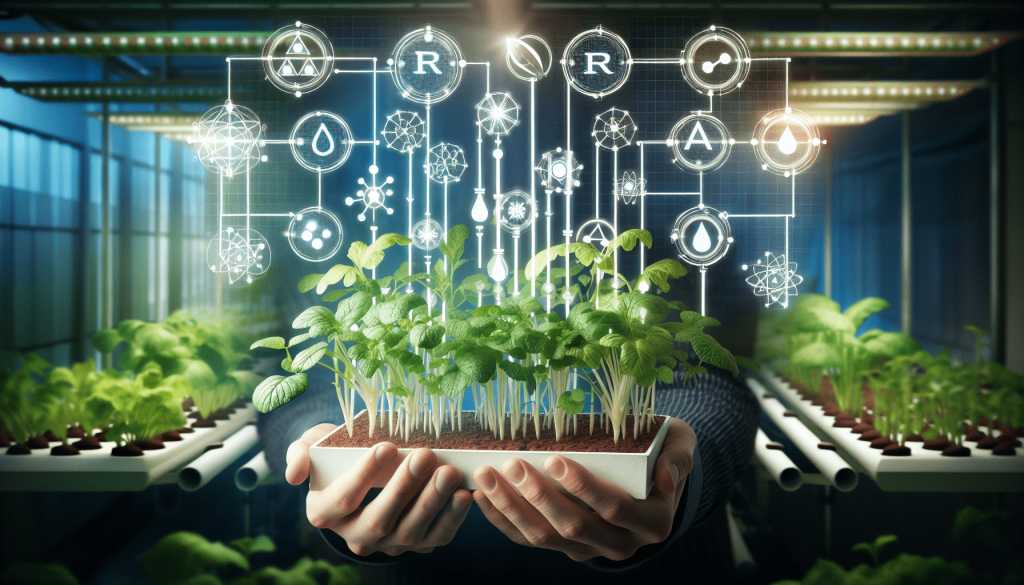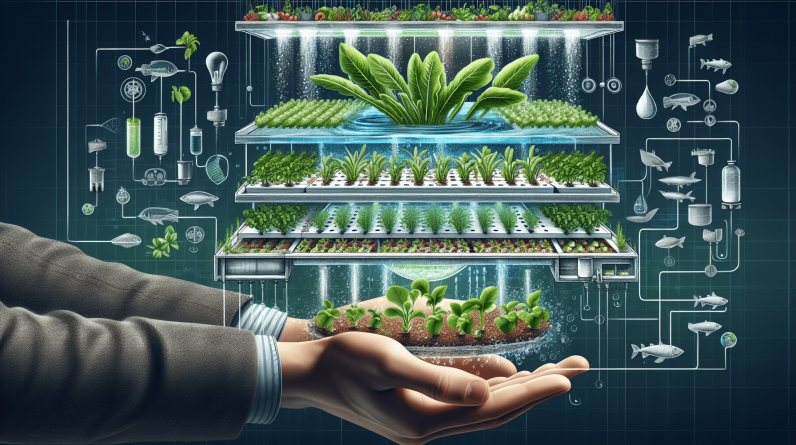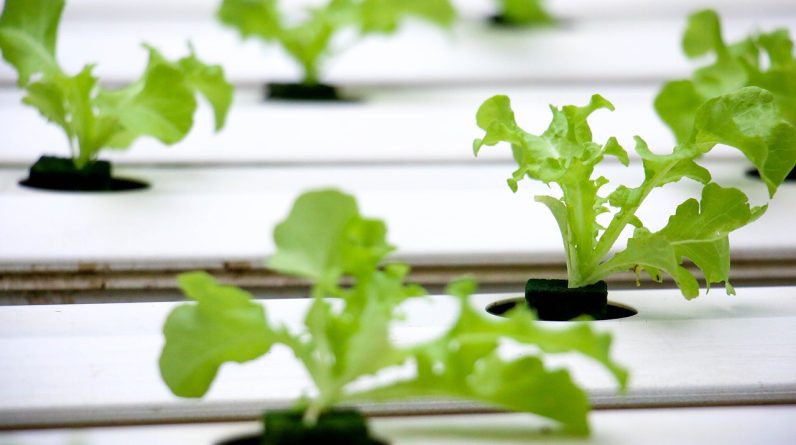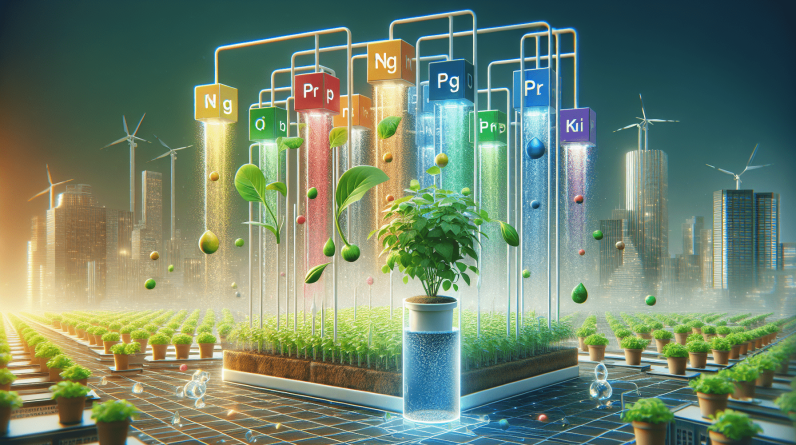
Imagine growing your own fruits and vegetables without the need for soil. With a hydroponic growing system, you can do just that. But how does it work? In this article, we will explore the role of nutrients in a hydroponic growing system, and how they contribute to the success of your plants. From understanding the essential nutrients plants need to thrive, to learning the best practices for nutrient management, you’ll gain valuable insights into this innovative and sustainable method of cultivation. Get ready to dive into the fascinating world of hydroponics and discover the key role nutrients play in its success.

Introduction
Welcome to the world of hydroponic growing systems! In this article, we will explore the numerous benefits of hydroponic gardening and delve into the key components that make this innovative method of plant cultivation so successful. We will also discuss the crucial role of nutrients in hydroponic systems, the different types of nutrients required for optimal plant development, and how to effectively manage nutrient levels to ensure healthy growth. So let’s get started on this exciting journey into the world of hydroponics!
Benefits of Hydroponic Growing System
Increased crop yield
One of the primary advantages of hydroponic gardening is the ability to significantly increase crop yield. Without the limitations of soil, plants in hydroponic systems can access a constant supply of water, nutrients, and oxygen, which promotes faster and healthier growth. This controlled environment allows you to maximize the productivity of limited space, enabling you to grow more plants and enjoy higher yields compared to traditional soil-based gardening methods.
Water efficiency
Water scarcity is a growing concern globally, making water efficiency a crucial consideration in agriculture. Hydroponic systems excel in this aspect by efficiently utilizing water resources. In traditional soil-based farming, plants often require more water due to evaporation and inefficient absorption. However, in a hydroponic system, water is recirculated, reducing water wastage and ensuring that plants receive optimal hydration without unnecessary consumption.
No need for soil
One of the most fascinating aspects of hydroponics is that it eliminates the need for soil. Instead, plants are grown in a soil-less medium, such as perlite, coco coir, or rockwool. By removing the dependency on soil, you not only eliminate the risk of soil-borne diseases and pests but also gain complete control over the growing conditions. This freedom allows you to customize the environment to suit the specific needs of your plants, ensuring their optimal growth and development.
Reduced use of pesticides and herbicides
In traditional farming, the excessive use of pesticides and herbicides can have detrimental effects on the environment and human health. However, in a hydroponic system, the risk of pests and weeds is significantly reduced. The controlled environment minimizes the chances of infestation, making it easier to manage and control any potential pest problems. Additionally, hydroponic plant roots are not exposed to the soil, further reducing the likelihood of weed growth. With fewer pests and weeds to contend with, you can reduce or even eliminate the use of harmful chemicals, making hydroponic gardening an eco-friendly alternative.
Key Components of a Hydroponic Growing System
To create an efficient hydroponic growing system, several key components are essential. These components work together to provide the plants with the necessary support, nutrients, and growing conditions for optimal growth.
Nutrient solution
A nutrient solution is a crucial component in a hydroponic system as it provides the essential elements that plants need for growth. This solution contains a balanced blend of macronutrients and micronutrients, ensuring that plants receive all the necessary nutrients without relying on soil. The nutrient solution is typically dissolved in water and delivered directly to the plant roots, ensuring efficient absorption and utilization.
Growing medium
In hydroponic systems, a growing medium replaces the traditional soil and provides support for the plants’ roots. The growing medium must be capable of holding moisture and allowing for proper aeration. Commonly used growing mediums include perlite, vermiculite, coco coir, expanded clay pellets, and rockwool. Each growing medium has its unique characteristics, and the choice depends on the specific requirements of your plants and the system you are using.
Water reservoir
The water reservoir serves as the central storage and distribution point for the nutrient solution. It needs to be large enough to hold an adequate amount of water for your plants while allowing space for turbulence and oxygenation. The reservoir should be made from a food-grade material, such as plastic, and equipped with a cover to prevent contaminants from entering the nutrient solution.
pH balancing system
Maintaining the proper pH level is essential for optimal nutrient absorption and plant health. Hydroponic systems typically require a slightly acidic pH level between 5.5 to 6.5. To ensure pH balance, you will need a pH balancing system, such as pH adjusters or buffers. These solutions enable you to monitor and adjust the pH level accordingly, preventing nutrient deficiencies or toxicities that may arise due to pH imbalances.
Lighting system
Since hydroponic systems often operate indoors or in areas with limited sunlight, a reliable lighting system is necessary. LED grow lights are the most commonly used artificial lighting source as they provide the appropriate spectrum of light for photosynthesis and are energy-efficient. The lighting system should be positioned at an appropriate distance and duration to mimic natural sunlight and promote healthy plant growth.
Aeration system
In hydroponic systems, oxygen is crucial for the health of the plant roots. An aeration system, such as an air pump and air stones, helps ensure a constant supply of oxygen to the nutrient solution. This aeration prevents root rot and provides an oxygen-rich environment that enhances nutrient absorption, leading to healthy and vigorous plant growth.
Importance of Nutrients in a Hydroponic Growing System
In a hydroponic growing system, nutrients play a vital role in providing the essential elements necessary for plant growth. Plants require a balanced supply of macronutrients and micronutrients to carry out their metabolic processes and achieve optimal development. Let’s explore the key macronutrients and micronutrients and their significance in hydroponics.

Macronutrients
Nitrogen (N)
Nitrogen is essential for the production of chlorophyll, which is vital for photosynthesis. It promotes vigorous vegetative growth and improves the overall health of plants. Nitrogen deficiency can result in stunted growth and yellowing of leaves.
Phosphorus (P)
Phosphorus is crucial for energy transfer and storage in plants. It plays a significant role in root development, flowering, and fruiting. Phosphorus deficiency can lead to delayed maturity and poor flower and fruit production.
Potassium (K)
Potassium is involved in numerous metabolic processes, including protein synthesis, cell division, and water regulation. It enhances disease resistance, improves fruit quality, and contributes to overall plant vigor. Potassium deficiency can cause weak stems, reduced fruit size, and increased susceptibility to diseases.
Calcium (Ca)
Calcium is necessary for cell wall formation and stability. It strengthens the plant structure, enhances root development, and helps prevent disorders like blossom end rot in certain crops. Calcium deficiency can result in stunted growth and distorted leaves.
Magnesium (Mg)
Magnesium is a crucial component of chlorophyll, playing a vital role in photosynthesis. It aids in the production of sugars, enhances nutrient uptake, and promotes enzyme activity. Magnesium deficiency can manifest as yellowing of leaves, particularly between the veins.
Sulfur (S)
Sulfur is involved in protein synthesis and plays a crucial role in chlorophyll formation. It is also essential for the production of vitamins, enzymes, and certain amino acids. Sulfur deficiency can cause yellowing of leaves, notably in younger leaves.
Micronutrients
Iron (Fe)
Iron is essential for chlorophyll synthesis and enzyme activity. It is involved in electron transport, which is vital for energy production and metabolism. Iron deficiency can cause yellowing of leaves, known as chlorosis.
Manganese (Mn)
Manganese is necessary for photosynthesis, enzyme activation, and nitrogen metabolism. It aids in chlorophyll production and DNA synthesis. Manganese deficiency can result in interveinal chlorosis and reduced growth.
Zinc (Zn)
Zinc is involved in enzyme activation and is necessary for various metabolic processes, including auxin production and protein synthesis. It promotes root development and seedling vigor. Zinc deficiency can lead to stunted growth, shortened internodes, and leaf deformities.
Copper (Cu)
Copper plays a role in photosynthesis, respiration, and enzyme activation. It is necessary for the production of lignin, which strengthens cell walls. Copper deficiency can cause wilting, twisted growth, and leaf and stem abnormalities.
Molybdenum (Mo)
Molybdenum is essential for nitrogen fixation and enzyme activity. It aids in the conversion of nitrate to ammonia and the use of nitrogen in plants. Molybdenum deficiency can result in yellowing and mottling of leaves.
Boron (B)
Boron is involved in cell wall formation, pollination, and hormone regulation. It contributes to the transport of sugars and the uptake of other nutrients. Boron deficiency can cause stunted growth, brittle leaves, and poor fruit development.
Chlorine (Cl)
Chlorine has a role in maintaining osmotic pressure and water regulation in plant cells. It is also involved in photosynthesis and ion balance. Chlorine deficiency is rare but can lead to wilting and the appearance of bronzing in certain plants.

The Role of Nutrients in Plant Development
Proper nutrient supply is crucial for various aspects of plant development in a hydroponic growing system. Let’s explore the ways nutrients influence plant growth and help achieve optimal results.
Promoting growth and development
Nutrients provide essential building blocks for plant growth and development. They are involved in the synthesis of proteins, enzymes, and hormones, as well as the production of energy required for cellular processes. By ensuring an adequate supply of all required nutrients, you can encourage vigorous vegetative growth, sturdy stems, and healthy leaves.
Enhancing root development
Healthy root systems are vital for nutrient absorption and overall plant health. Nutrients such as phosphorus are essential for root development, promoting the growth of a robust and extensive root system. Adequate nutrient supply supports strong roots, improving their ability to access water and essential elements, leading to healthier plants with improved nutrient uptake.
Stimulating flower and fruit production
Flowering and fruiting are crucial stages in the life cycle of many plants. Proper nutrition plays a key role in ensuring successful reproductive processes. Nutrients such as phosphorus and potassium are particularly important for flower and fruit development. They contribute to the formation and maturation of flowers and fruits, promoting higher yields and improved quality.
Improving nutrient absorption and assimilation
In a hydroponic system, plants solely rely on the nutrient solution for their nutrient intake. The presence of adequate macronutrients and micronutrients ensures efficient absorption and assimilation of nutrients by the plant roots. Proper nutrient balance enables plants to attain optimal growth rates and utilize nutrients effectively, leading to healthier and more productive plants.
Types of Nutrient Solutions for Hydroponic Systems
In hydroponic systems, there are different types of nutrient solutions available to meet the specific needs of plants. Let’s explore the three main types of nutrient solutions commonly used in hydroponics.
Hydroponic-specific nutrient solutions
Hydroponic-specific nutrient solutions are formulated specifically for hydroponic gardening. These solutions contain a balanced blend of macronutrients and micronutrients necessary for optimal plant growth. They are designed to dissolve easily in water and provide readily available nutrients to the plants. Hydroponic-specific nutrient solutions are available in various formulas suitable for different stages of plant growth, such as vegetative growth, flowering, and fruiting.
General-purpose nutrient solutions
General-purpose nutrient solutions are widely used in both hydroponics and traditional soil-based gardening. These solutions provide a broad range of essential nutrients required by most plants. General-purpose nutrient solutions are an excellent choice for beginners or for growing a variety of plants in a hydroponic system. However, they might not be as tailored to the specific requirements of certain plants compared to hydroponic-specific solutions.
Custom nutrient solutions
Some advanced hydroponic growers prefer to create custom nutrient solutions tailored to the specific needs of their plants. By carefully formulating their own nutrient blends, growers can fine-tune the nutrient levels and ratios to maximize plant health and productivity. Custom nutrient solutions allow for greater flexibility and customization, but they require a deep understanding of plant nutrition and careful monitoring of nutrient levels.
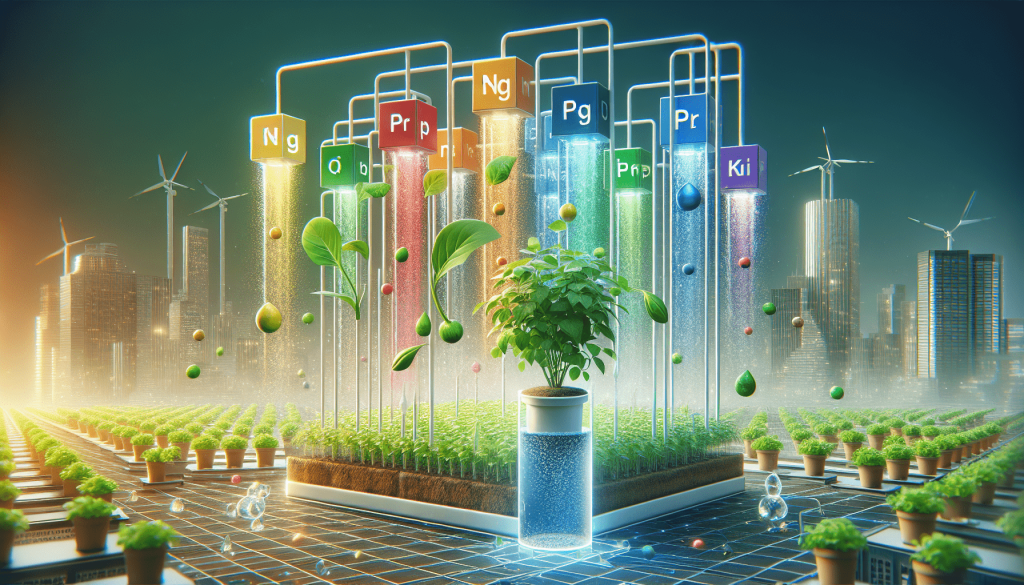
Managing Nutrient Levels in Hydroponic Systems
To ensure optimal plant growth and prevent nutrient imbalances, it is essential to manage and monitor nutrient levels in a hydroponic system. Here are some key practices to keep in mind:
Monitoring EC and pH levels
Electrical conductivity (EC) and pH levels are crucial parameters to monitor in a hydroponic system. EC measures the concentration of dissolved salts in the nutrient solution, indicating the nutrient strength. pH, on the other hand, determines the acidity or alkalinity of the solution. Regular monitoring of EC and pH levels allows you to detect any deviations and take corrective measures promptly.
Adjusting nutrient solution strength
As plants grow and their nutrient requirements change, it is necessary to adjust the strength of the nutrient solution accordingly. This can be done by increasing or decreasing the concentration of the nutrient solution. It is important to follow the manufacturer’s guidelines or consult reliable resources to ensure the correct nutrient strength for different stages of plant growth.
Regular flushing of the system
Regularly flushing the hydroponic system with fresh water helps prevent the buildup of salts and excess nutrients. Flushing removes any accumulated residues and helps maintain optimal nutrient levels. Depending on the specific setup and plant requirements, you may need to flush the system every few weeks or months.
Preventing nutrient deficiencies and toxicities
Careful monitoring of plants for nutrient deficiencies or toxicities is essential. Symptoms of nutrient deficiencies or toxicities can manifest in different ways, such as leaf discoloration, stunted growth, or distorted leaves. By being vigilant and promptly addressing any nutrient imbalances, you can prevent potential issues and ensure healthy plant growth.
Common Nutrient Problems and Solutions
While hydroponic systems are highly efficient, nutrient imbalances can still occur. Here are some common nutrient problems you may encounter and potential solutions to troubleshoot these issues.
Nutrient deficiency symptoms
Nutrient deficiencies can lead to visible symptoms in plants, indicating a lack of specific essential elements. For example, nitrogen deficiency may cause yellowing of leaves, while phosphorus deficiency can result in purplish leaves. Identifying these symptoms early on is crucial for addressing the issue. Solutions include adjusting the nutrient solution strength, using a hydroponic-specific nutrient formula, or supplementing with a targeted nutrient solution to address the specific deficiency.
Nutrient toxicity symptoms
Nutrient toxicities occur when certain elements are present in excessive amounts, inhibiting plant growth and causing symptoms like leaf burn or browning. To mitigate nutrient toxicities, it is important to regularly monitor nutrient levels, adjust the nutrient solution strength, and ensure proper flushing of the system to prevent the accumulation of excess nutrients.
Troubleshooting nutrient imbalances
If you notice any nutrient imbalances or unusual symptoms in your plants, it is essential to investigate the underlying causes and take appropriate actions. This may involve conducting water and nutrient tests, adjusting the pH level, and modifying the nutrient solution strength or composition. In some cases, seeking advice from experienced hydroponic growers or horticulturists can be beneficial in troubleshooting and resolving nutrient imbalances.
In conclusion, nutrients are the lifeblood of a hydroponic growing system. They play a critical role in promoting plant growth, enhancing root development, stimulating flower and fruit production, and improving overall nutrient absorption and assimilation. By understanding the different types of nutrients and their significance, as well as effectively managing nutrient levels, you can create a thriving hydroponic garden and enjoy the abundant rewards of this innovative cultivation method. Happy growing!
